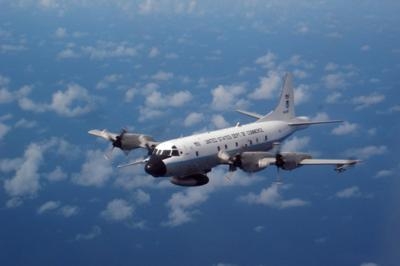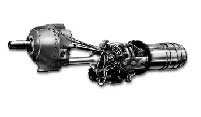Thu, Nov 14, 2013
Fuel-Saving Modifications Developed By Engine Maker Rolls-Royce
The WP-3D "Hurricane Hunter" aircraft of the National Oceanic and Atmospheric Administration (NOAA) will be the first customer to fly with the fuel-saving T56 Series 3.5 engine enhancement package developed by Rolls-Royce. The engine enhancement package has demonstrated nearly 10 per cent reduction in fuel use during recent flight testing in C-130 aircraft, also powered by Rolls-Royce T56 engines. The enhancement allows T56 engines to operate at significantly lower turbine temperatures, extending parts life and improving reliability by 22 per cent.

The two-year, firm-fixed price contract with NOAA covers standard overhauls plus technology insertion in ten engines for two aircraft and spares. Rolls-Royce will contract with Lockheed Martin, manufacturer of the aircraft, to plan and conduct flight testing of the new enhancement packages, as well as complete engine qualification. The first NOAA WP-3D aircraft with the Series 3.5 enhancements are expected to re-enter service beginning in early 2015.
Tom Bell, Rolls-Royce, President Defense, said, "We are thrilled that the NOAA ‘Hurricane Hunters’ will be the first to fly with our T56 Series 3.5 engine enhancement. As NOAA goes about its crucial mission of keeping the public safe and enriching lives through science, we will work to keep their aircraft flying longer, while conserving fuel and lowering maintenance costs."
"Many hurricane missions are into storms far from home base, so fuel-efficiency and engine reliability are critical," said NOAA Corps Cmdr. Devin Brakob, veteran NOAA Hurricane Hunter and aircraft specialist with the NOAA Office of Marine and Aviation Operation’s Platform Acquisition Division. "The anticipated fuel savings and reliability provided by the Series 3.5 engine enhancement package could mean getting an extra pass through the storm instead of heading back to base."

The highly trained men and women from NOAA fly directly into storms in sensor-packed planes to gather data forecasters need to monitor hurricanes and predict their path. NOAA uses two types of aircraft to gather data on hurricanes-the four-engine Lockheed Martin WP-3D Orion turboprop, and a Gulfstream IV-SP jet, powered by two Rolls-Royce Tay engines. The WP-3D flies at low altitudes in the midst of the storm and collects data on wind speed, temperature, and various other storm characteristics. The Gulfstream IV flies above and around a hurricane to observe the winds and weather conditions around the storm.
The Rolls-Royce Series 3.5 engine enhancement package has completed all requirements for US Air Force qualification on the C-130 and recently received FAA certification for the commercial version of the T56 engine. The US Air Force has estimated that incorporating the engine enhancement into its C-130 fleet would save $2 Billion, while extending the life of the fleet for decades.
The T56 Series 3.5 engine enhancement can be installed as part of a conventional engine overhaul, and does not require any aircraft or engine control system modifications. In addition to the US Air Force and NOAA, international operators of C-130 and P-3 aircraft are also considering incorporating the T56 engine enhancement into their fleets.
(Hurricane Hunter image provided by NOAA. T56 engine image provided by Rolls-Royce))
More News
Aviation Governance Secured...At Least For a While The National Business Aviation Association similarly applauded the passage of the FAA's recent reauthorization, contentedly recou>[...]
Emphasis On Growing The Future of Aviation Through Concentration on 'AFFORDABLE FLYERS' It's been a number of years since the Latest Edition of Jim Campbell's HUGE SportPlane Resou>[...]
Amazilia Aerospace GmbH, Develops Digital Flight Control, Flight Guidance And Vehicle Management Systems Textron eAviation has acquired substantially all the assets of Amazilia Aer>[...]
Honeywell's Primus Brings New Tools and Niceties for Hawker Operators Hawker 4000 business jet operators have a new installation on the table, now that the FAA has granted an STC f>[...]
Company Celebrates Niche-but-Important Advancement in Industry Standards Echodyne has announced full integration of its proprietary 'EchoFlight' radar into the e American Aerospace>[...]
 Bolen Gives Congress a Rare Thumbs-Up
Bolen Gives Congress a Rare Thumbs-Up The SportPlane Resource Guide RETURNS!!!!
The SportPlane Resource Guide RETURNS!!!! Buying Sprees Continue: Textron eAviation Takes On Amazilia Aerospace
Buying Sprees Continue: Textron eAviation Takes On Amazilia Aerospace Hawker 4000 Bizjets Gain Nav System, Data Link STC
Hawker 4000 Bizjets Gain Nav System, Data Link STC Echodyne Gets BVLOS Waiver for AiRanger Aircraft
Echodyne Gets BVLOS Waiver for AiRanger Aircraft




